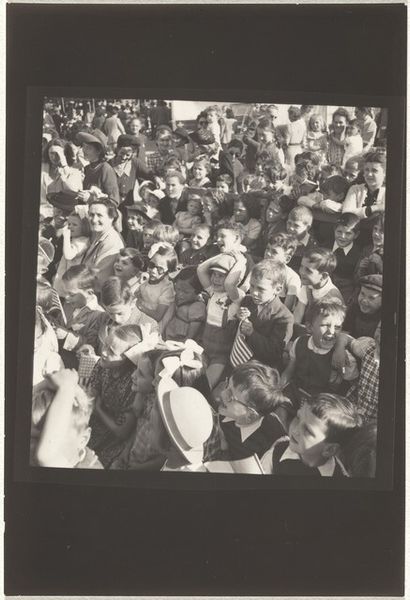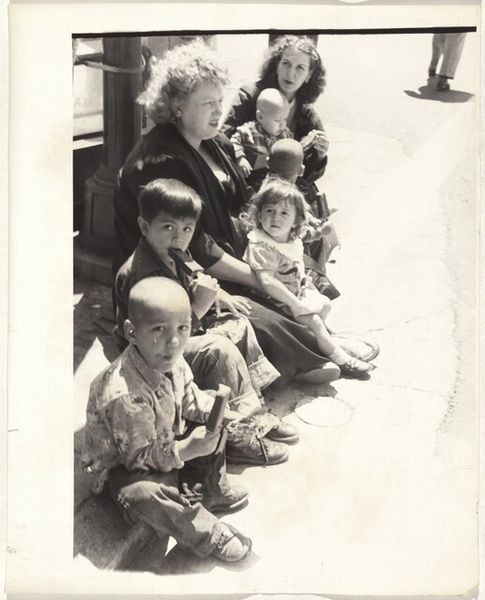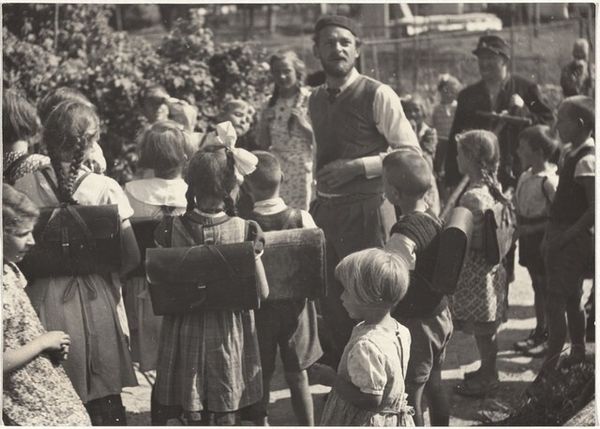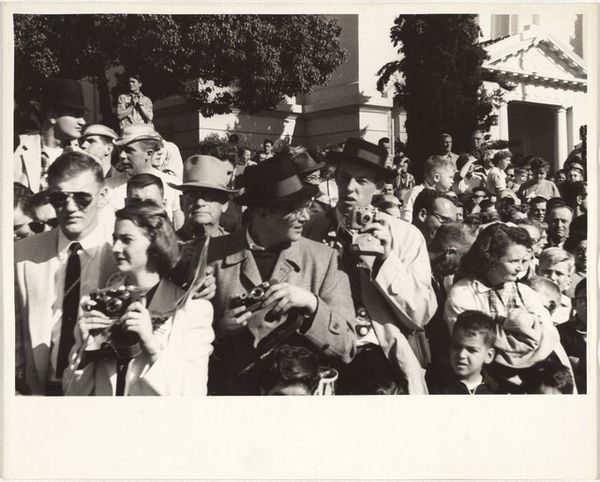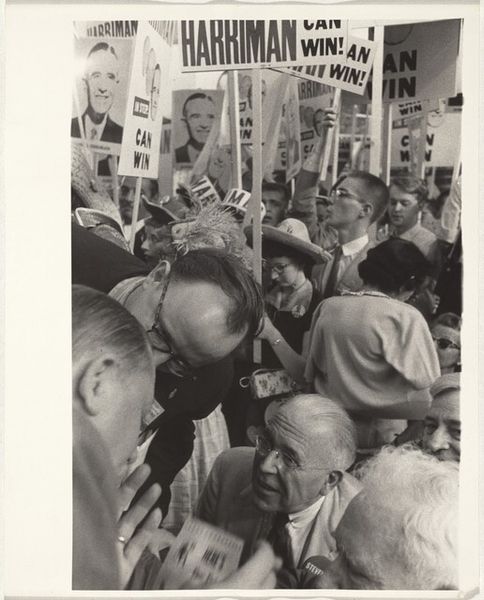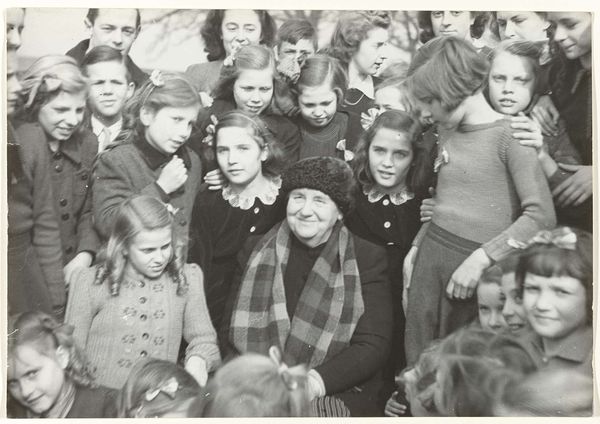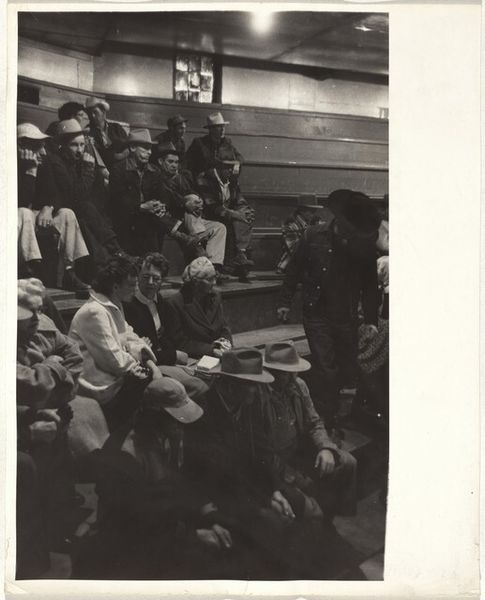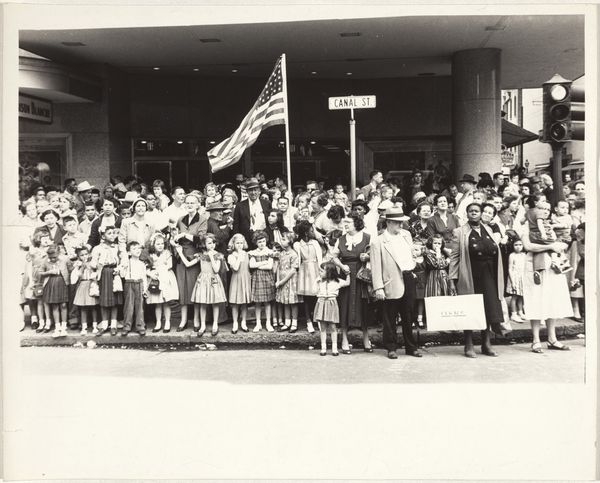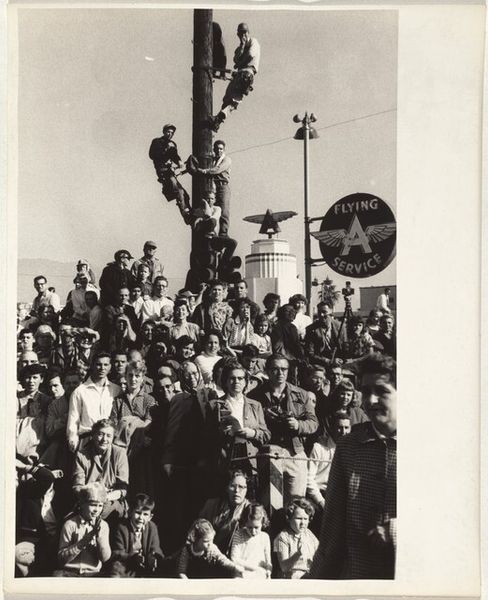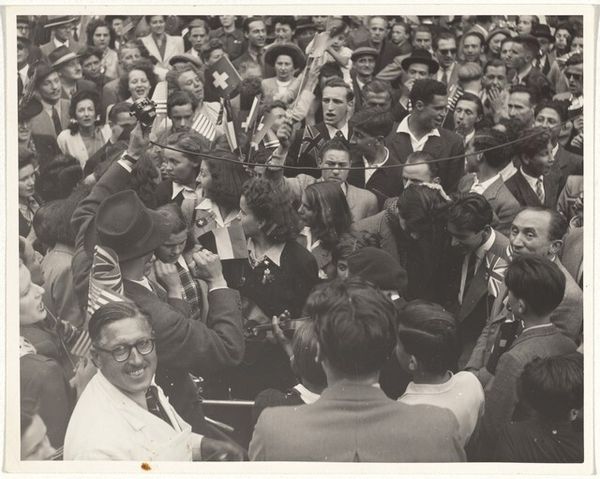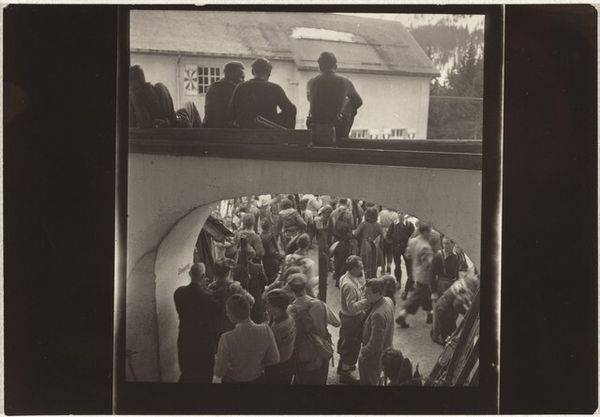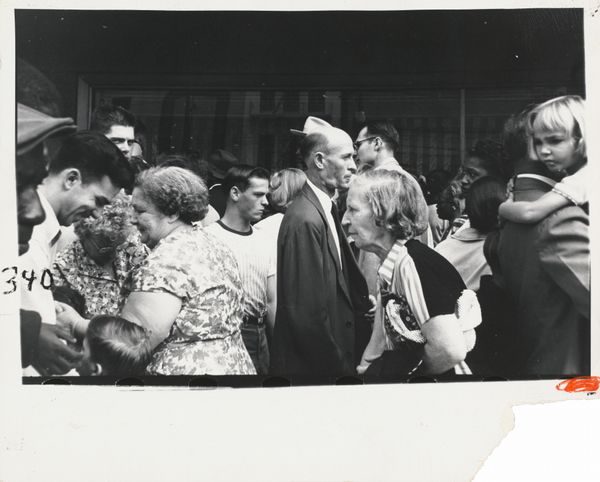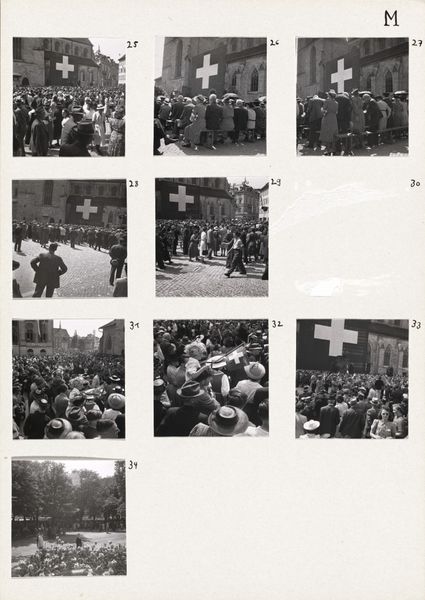
print, photography, gelatin-silver-print
#
portrait
#
print photography
# print
#
archive photography
#
street-photography
#
photography
#
historical photography
#
group-portraits
#
gelatin-silver-print
#
ashcan-school
Dimensions: image: 19 x 18 cm (7 1/2 x 7 1/16 in.) sheet: 24 x 18.2 cm (9 7/16 x 7 3/16 in.)
Copyright: National Gallery of Art: CC0 1.0
Editor: Robert Frank’s gelatin silver print, "Crowd of children--40 Fotos," made sometime between 1941 and 1945, depicts just that, a tightly packed group of kids. The composition is bursting with so many faces, it feels quite energetic, yet the monochromatic palette adds a layer of solemnity to it. What can you tell us about the context of this work? Curator: The era is vital. Between 1941 and 1945, the world was engulfed in World War II. While Frank was Swiss, not directly involved in the conflict, the pervasive anxiety and social upheaval resonated globally. Given this backdrop, a photograph of children, en masse, carries a weighty implication. What kind of messages about social cohesion, future, or propaganda might be sent here? Editor: Propaganda? The image appears to celebrate innocence and togetherness rather than promote a political ideology. Curator: Indeed, on the surface. However, consider the function of imagery during wartime. Images of happy, healthy children can become powerful tools for boosting morale and projecting an image of national strength, particularly as America's entry into the war shaped national identity. Who is included, who is excluded and what is highlighted for the “nation” is important to understand in such photography. Do you see any signifiers of class? Editor: I do; look at their clothing and neatness! Some of them are well-dressed. This might indicate a constructed sense of normalcy or maybe even an attempt to put a hopeful spin on reality. It does reveal social stratification in such imagery! Curator: Exactly! Frank is revealing society, as it wants to be, as it is, and perhaps as it fears it may become. The archive photographs show an intersection between documentary, portraiture and a socio-political statement during an era of great historical and global turmoil. It pushes the viewer to engage more deeply with the context of art in shaping collective narratives. Editor: Thank you. It's interesting how even seemingly simple photographs can hold such layers of historical and political significance, isn't it? I'll certainly look at pictures of groups differently now!
Comments
No comments
Be the first to comment and join the conversation on the ultimate creative platform.
